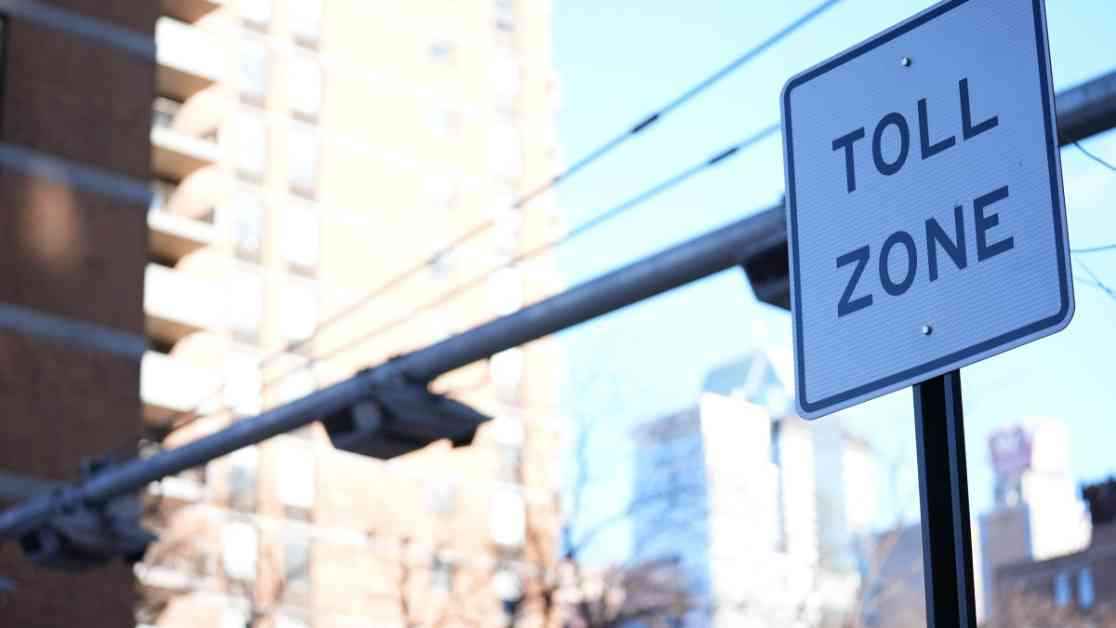Impact of MTA’s Congestion Pricing Unveiled: Commutes Transformed
Over the past few weeks, New Yorkers have witnessed a significant shift in their daily commutes, thanks to the Metropolitan Transportation Authority’s (MTA) newly implemented congestion pricing initiative. According to MTA officials, the early data paints a promising picture of faster commutes, reduced gridlock, and a noticeable change in commuting patterns.
Juliette Michaelson, the MTA Deputy Policy Chief responsible for analyzing the impact of congestion pricing, expressed her enthusiasm for the transformative improvements observed thus far. She highlighted a notable shift towards public transit among commuters, a trend supported by data showing a 17% decrease in crossing times at the Lincoln Tunnel and a remarkable 48% improvement at the Holland Tunnel compared to the same period in the previous year.
MTA Chairman Janno Lieber echoed Michaelson’s sentiments, emphasizing the tangible benefits of congestion pricing that extend beyond mere speculation. Lieber pointed to a substantial increase in subway and bus ridership, with express buses reporting a 5.8% surge in passengers and standard buses experiencing a 1.9% boost compared to the previous year. Notably, riders on express buses from Queens, Staten Island, and the Bronx have shaved off approximately 10 minutes from their daily commutes since the implementation of congestion pricing.
Subway ridership has also seen a notable uptick, with a 7.3% increase overall and a staggering 12.2% spike on weekends. Lieber shared an amusing anecdote where a bus operator humorously remarked about the increased speed of travel through tunnels, suggesting a need to adjust schedules to accommodate the newfound efficiency.
An unexpected trend observed by Michaelson is the emergence of an early morning commute rush around 4:55 a.m., just before the peak toll hours of 5 a.m. to 9 p.m. This phenomenon indicates a shift in commuting behavior, with some drivers opting for an earlier departure to take advantage of the reduced toll of $2.25 during off-peak hours.
The MTA revealed that over a million fewer vehicles entered the Congestion Relief Zone (CRZ) due to the toll, with passenger vehicles and for-hire vehicles constituting a significant portion of the traffic. Furthermore, data indicated that a majority of vehicles entering the zone hailed from north of 60th Street, with Brooklyn, Queens, and New Jersey contributing significantly to the traffic flow.
Beyond the CRZ, the MTA highlighted the positive ripple effects of congestion pricing on areas like the Long Island Expressway, Flatbush Avenue, and 495 in New Jersey, where travel times have notably improved. Additionally, ridership at five Long Island stations, including New Hyde Park, Douglaston, Garden City, Ronkonkoma, and Woodmere, has seen an increase as a result of these changes.
Despite the evident benefits of congestion pricing, opposition remains strong, particularly among suburban drivers. New Jersey Governor Phil Murphy recently amended the state’s lawsuit against the toll system, citing concerns about revenue sharing with neighboring states. President Donald Trump’s nomination of former Congressman Marc Molinaro, a staunch congestion pricing opponent, to head the Federal Transportation Administration has added another layer of complexity to the ongoing debate.
As the MTA prepares to release detailed revenue figures in February and awaits data from ride-hailing services like Uber and Lyft, the long-term implications of congestion pricing on New York City’s transportation landscape remain a subject of intense scrutiny and debate. While legal challenges persist, MTA officials remain steadfast in their commitment to navigating these obstacles and ensuring the continued success of this transformative initiative.


